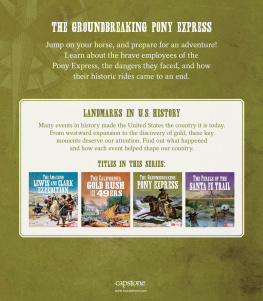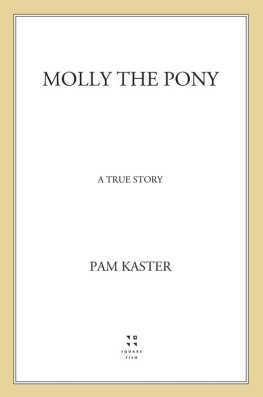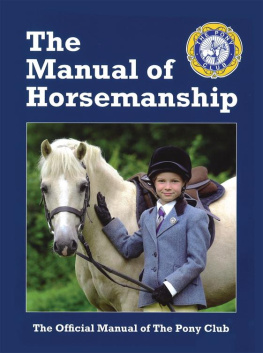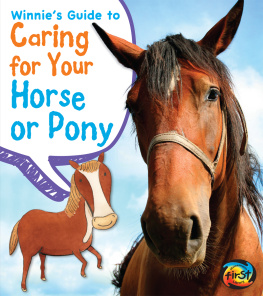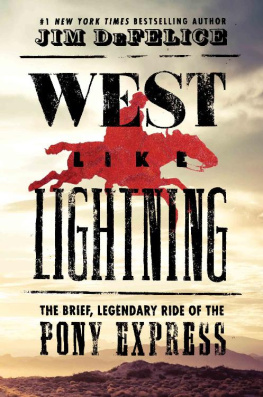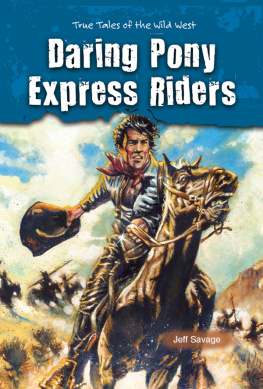A lone rider raced through the rough mountain path. He was only 16 years old and looked small atop his powerful horse. He leaned lower over its mane and picked up speed. As a Pony Express rider, his job was to be fast. He and the other riders had a limited amount of time to get mail to Sacramento, California. Not a second could be wasted on the long, cross-country route.
He was only a couple of miles out from the next Pony Express station. Another rider in the relay would be waiting to take the letters the rest of the way or so he hoped. He had heard rumors of Paiutes, a local American Indian tribe, attacking stations. He pushed his horse faster. Out on the frontier anything was possible, and everything was dangerous.
The Pony Express used a relay system. Each rider covered certain sections of the almost 2,000-mile (3,219-kilometer) route. At the end of one section, another rider would be waiting to carry the mail. The relay of horses, riders, and rest stations went from Missouri to California.
Getting west was not easy. Riders traveled over mountains and through deserts. American Indians controlled much of the western territory. And some tribes were unhappy with white settlers entering their land. But not even the summer heat, winter snow, and hostile tribes could stop the Pony Express riders.
A Pony Express rider arriving at a rest station.
The mail must go through was the Pony Express of the Pony Express riders. But the Pony Express didnt get started quickly. It took time, money, and planning.
How It Began
More than 100,000 people had moved to California during the Civil War (18611865). The demand for fast communication sparked the creation of the Pony Express, which began in 1860.
2
JOURNEYING WEST
Many settlers heading to California during the to California.
Did You Know?
Before the Pony Express, some mail was shipped to what is today Panama in Central America. From there it was carried across Panama to the Pacific Ocean. The mail was then put on another ship bound for California.
One concern for new settlers of the West was mail service it was slow and newspapers.
Eventually, the government began sending mail overland instead of by sea. Overland mail could follow two trails a southern route or a northern-central route. The northern way was shorter. But because of rough trail conditions, only one rider at a time could travel through it during the winter months.
Independence, Missouri, around 1855
In the late 1850s, southern route. While the southern route was safer, the postmaster general also had political reasons for his preference. He hoped this service would encourage settlers to move into slave states and territories. That way, slavery might be expanded into the southwestern territories.
In the 1900s, the Pony Express was sometimes called the Pony Post.
William Russell
But the horses and riders along the way.
Russell hoped a pony express would prove that the northern route was the way to transport mail. He also hoped that his company would be well paid by the government to deliver mail to the West. Late in 1859, Russell, Majors, and Waddell formed the Central Overland California & Pikes Peak Express Company. Through that, the Pony Express was created.
3
PREPARATIONS
The Central Overland Company had much to do to organize the Pony Express. Horses and ponies had to be bought. Riders and station workers had to be hired, and some new stations needed to be built. The plan called for each rider to carry mail for about 75 miles (121 km). Riders would stop every 10 or 15 miles (16 or 24 km) at a relay station to switch horses. At the 75-mile (121-km) mark, another rider would be ready with a fresh horse to begin the next long run.
On March 31, 1860, the St. Joseph Weekly West newspaper proudly announced that St. Joseph, Missouri, would be the eastern end of the Pony Express. The Pony Express had about 160 stations. The route went from St. Joseph to Sacramento. This was a distance of nearly 2,000 miles (3,218 km). Some stations already existed, and many more were quickly built.
The route roughly followed the Mormon and Oregon-California trails. It included modern-day Kansas, Nebraska, Colorado, Wyoming, Utah, Nevada, and California.
The company bought about 400 horses. Some of them were wild mustangs found in western United States. These horses were used to the hot desert climate. Others were Kentucky thoroughbreds, bred for speed. Horses had to be able to run 12 or 13 miles (19 or 20 km) without stopping.
Riders earned $50 to $100 a month, which was a good stations in the West risked attack.
But plenty of young men still wanted to ride for the Pony Express. About 80 riders were needed to keep the Pony Express in motion. Many of those hired were still teenagers. The declaring that he would not use bad language or drink alcohol.
Each station had workers who took care of the horses. If the station was also used for or other travelers, it had several employees and more animals. Many stations, especially in the desert, were lonely and rugged. Often they were no more than a shack or even a large hole dug out of a hillside.
an off-duty pony express rider
Riders used mochilas, important equipment specially made for the Pony Express. This leather cover fit over the horses saddle. Each rider needed two mochilas. One was to carry mail from east to west and another to carry mail from west to east. Each mochila had four boxlike pockets that held the mail. The rider kept the mochila in place with his legs as he rode. When it was time for a fresh horse, the mochila could easily be slipped off the tired horse and onto the next one.
Mail would cost $5 per half ounce, which was very expensive then. But the mail would arrive in California from St. Joseph in just 10 days! Something that was unheard of at the time.

